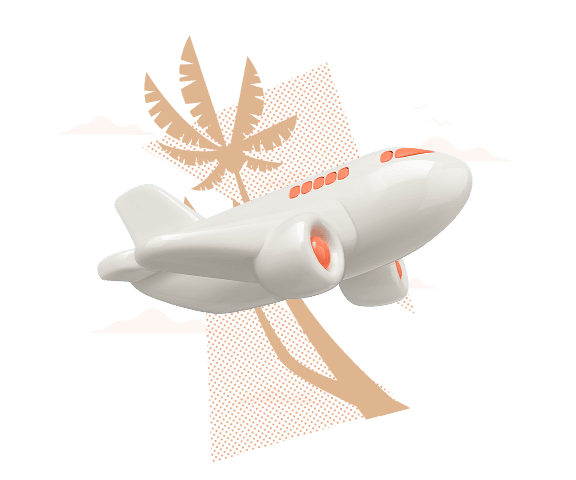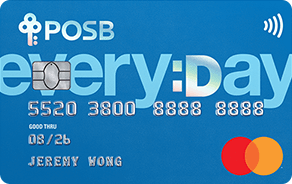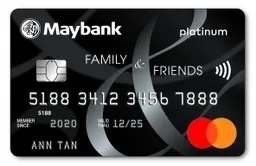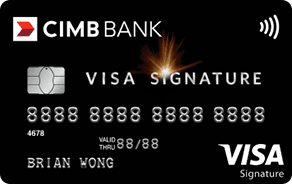How to Fly with a Dog
Updated: 28 Jul 2025
Written bySingSaver Team
Team
The information on this page is for educational and informational purposes only and should not be considered financial or investment advice. While we review and compare financial products to help you find the best options, we do not provide personalised recommendations or investment advisory services. Always do your own research or consult a licensed financial professional before making any financial decisions.
Whether it’s because you’re relocating due to work or going on a long sabbatical—it can be hard leaving your beloved pooch behind. Thankfully, there are steps you can take to fly to your destination with your four-legged bestie, provided certain conditions are met.
In Singapore’s context, it’s best to explore options ahead of time with your airline of choice and also book a checkup for your pet with your vet, to ensure that your dog has a clean bill of health. In this article, we’ll be mainly looking at airline policies pertaining to Singapore Airlines and Scoot.
Flying with large dogs vs small dogs
First things first, is your pet an assistance or service dog? This is a very important question, as it will determine whether it will be able to sit in the same cabin as you. This is because while assistance dogs are allowed in the cabin, regular pets are not.
This means that if you’re flying with Singapore Airlines, companion animals will fly in the cargo hold instead of the cabin. As of 1 April 2023, emotional support dogs have been classified as companion animals and can no longer accompany their owners on flights. Assistance dogs on the other hand, undergo special training to help disabled people, such as leading visually impaired people, alerting deaf people to important sounds or supporting those who are physically disabled.
If you’re flying with your assistance dog, it may sit in your lap if it is no larger than a 2-year old child but may not occupy a seat. Larger dogs will need to stay on the cabin floor in front of your seat. Dogs must be leashed or kept in a carrier.
In-cabin vs. cargo
In-cabin
Singapore Airlines has a list of restricted breeds of dogs that are not allowed in-flight, regardless of whether they are assistance or companion dogs. Some prohibited breeds include mastiffs, pit bulls, shepherd dogs and rottweilers. If your assistance dog belongs to a restricted breed, Singapore Airlines will need additional documentation certifying its behaviour before it will be allowed on-board. It must also be muzzled.
Flying with your assistance dog? Note that it must be:
-
At least 4 months of age.
-
Trained to obey commands and behave appropriately—this means no disruptive or aggressive behaviour.
-
Leashed or harnessed, or kept inside a pet carrier at all times.
-
Additionally, you need to ensure that your dog does not block any emergency exits or aisles, or obstruct the legroom of your fellow passengers.
Owners of assistance dogs are encouraged to provide all necessary documents at least 48 hours before their flight and inform their airline office, for a smooth and worry-free journey. Similar rules apply for owners of assistance dogs planning to fly with Scoot.
» MORE: The A-Z of travelling with pets
As cargo
For all other non-assistance dogs, they will be allowed to travel in the cargo hold as checked baggage, if they meet all qualifying criteria. Other than not being of a prohibited breed, they must also not be pregnant and they must be at least 3 months old.
Is your pet a big boy or girl? If your pet’s combined weight with their carrier exceeds 32kg, you will have to make travel arrangements with a cargo agent like Pampered Pets Relocation or Jason’s Pet Relocation. Another thing to note is that pets will not be accepted on-board Boeing 737-operated flights, as there is no temperature control in the cargo hold. Contact Singapore Airlines at least 2 weeks before departure and provide information on your dog’s breed, gender, name, age, weight as well as the weight and dimensions of their carrier.
As for Scoot flights, pets are not allowed onboard. Only assistance dogs may accompany their owners in the cabin, if they have all the relevant documentation, such as a training certificate, a veterinary health certificate, any necessary quarantine certificates and more. You can check the full list of required documents by visiting Scoot’s help centre online or by dialling the Scoot Call Centre.
Know the cost of pet ownership inside and out
From microchipping, dental work to regular disease prevention—know the costs of owning a pet in Singapore before you get one.
How much will it cost to fly with a dog?
Singapore Airlines welcomes assistance dogs onboard with no additional charges. You will need to produce relevant documentation, which can vary depending on your destination. Most places will require documentation of your dog’s behaviour, a veterinary health certificate and proof of completion of assistance dog training. For a complete list of necessary documents, please visit Singapore Airlines’s website.
If you’re flying with a non-assistance dog, however, your dog will be subject to additional baggage charges, depending on the combined weight of their carrier and the dog itself. Though Singapore Airlines offers a discount of up to 25% to those who pre-purchase additional baggage, this is not available for pet carriages.
Additional baggage charges can vary wildly from non-Canadian/US routes compared to Canadian/US routes, with the latter typically being much more pricey. Baggage charges start at USD8/kg for non-Canadian/US routes, while the prices for Canadian/US routes start at USD135. Also remember to account for the cost of your carrier, which can range from anywhere between $100-800.
Best credit cards for pawrents
Pet benefits: 3% cash rebates at Pet Lovers Centre, no min. spend required
Pet benefits: 8% cashback on retail pet spend
Pet benefits: 10% cashback on pet shops & veterinary services
Due to import and export regulations, assistance dogs may encounter difficulties travelling with their owners in-cabin to destinations like New Zealand, Bali, Brunei, Dubai and The Maldives. Always plan ahead when it comes to travelling with your assistance dog, so you can reroute accordingly if needed.
» Learn more: 5 practical money tips for pet owners
» Learn more: Best pet-friendly hotels in SG for staycations
Weight limits
While non-assistance dogs have a weight limit of 32kg, Singapore Airlines does not impose a weight limit on assistance dogs. However, larger dogs must remain on the cabin floor in front of the passenger seat. A moisture-absordent material, like an underpad, must be placed underneath the animal at all times. If your dog is small enough to fit comfortably and safely on your lap, it can stay there with you.
Flying back to Singapore? If your assistance dog is recognised by the Animal & Veterinary Service of Singapore (AVS), you won’t need to check in a pet carrier. Your pet will be required to undergo a health inspection and be declared clinically healthy on arrival to be allowed entry.
Is flying safe for dogs?
Ever wondered what it’s like for pets to travel onboard inside the cargo hold of an aircraft? For temperature-controlled cargo holds, humidity and temperature is regulated via air-conditioning. This means temperature and noise levels are similar to what you’d experience in the passenger cabin. However, lighting is turned off to encourage pets to rest. Some airlines, like Japan Airlines, encourage pet owners to exercise caution when transporting your pets during summer and winter. This is because temperature and humidity may change during transport, and when loading and unloading.
In general, it is perfectly safe for dogs to fly if their vet is confident about their health status. However, some airlines restrict brachycephalic dogs, which have shortened snouts, from flying due to their compromised respiratory systems. For example, both Singapore and Japan Airlines prohibit French Bulldogs and Bulldogs on flights. Some pet movers, such as Qantas Freight, transports certain breeds of brachycephalic dogs, provided bookings are made with a Qantas Freight-approved pet travel specialist.
If you are unsure if your pet is suitable for air travel, check with your airline and vet so you can make special arrangements if necessary.
Use an appropriate kennel
All pet carriers for air travel must conform to standards set by the International Air Transport Association (IATA). Your pet carrier should have enough space for your dog to be able to turn about, lie down, or stand normally. It should also be well ventilated, with ventilation holes on at least three of its sides. It should also have food and water containers and be well secured.
The height limit of your pet carrier depends on the aircraft. For instance, a Boeing 787 has a maximum permissible pet carrier height of 111cm, whereas an Airbus A380 only has room for a maximum height of 60cm. Ensure you make all necessary arrangements with Singapore Airlines 2 weeks before departure.
Other than ensuring your pet carrier meets all the regulations, you should prepare your furry friend for their flight by helping them to acclimatise to the carrier. After all, flying can be stressful for animals too. Singapore Airlines recommends that you start the process a few weeks before departure. Place a familiar blanket or toy in the carrier and keep them inside for up to 2 hours before rewarding them with a treat. On the day of the flight, walk your pet and give them a light meal and some water 2 hours before takeoff.
International flights may present challenges
Flying back from South Korea after your sabbatical? Your pet might need to be quarantined for up to 30 days and be vaccinated against rabies, regardless of whether they have already been vaccinated. This is due to a change made in July 2024 by AVS, when countries were reclassified according to rabies risk status, moving from a 4-category system to a 3-schedule system.
As South Korea is not listed under Schedule I, which contains countries with low or no risk, or Schedule II, which contains countries with some risk, personal importing of pets will incur a 30-day quarantine period in addition to quarantine fees (if detained at a quarantine facility), as well as rabies vaccination charges.
Personal importing of pets from Schedule I countries like Australia and the United Kingdom will require no quarantine, if the animal is clinically healthy and all regulations are met. As for Schedule II countries such as Japan and Hong Kong SAR, a quarantine period of 10 days is needed—as well as a valid vaccination against rabies.
Can you bring emotional support animals on planes?
When the Department of Transport of the United States announced in December 2020 that emotional support animals have been reclassified as pets instead of assistance animals, it set off a flurry of chain reactions across the world. Alaska, Delta and United Airlines soon issued bans on emotional support animals on planes, followed by British Airways and many others.
Though some airlines, like Air France and Lufthansa still allow pets in the cabin, subject to their weight, they are classified as pets and not assistance animals. This means they will have to stay in their carriers, which by the way, also accounts for their weight. Air France and Lufthansa impose a limit of 8kg on pets who travel with their owners in-cabin, pets that are heavier will have to travel in the cargo hold instead.
According to Singapore Airlines, an assistance dog is trained to assist people with disabilities and can include guide dogs, hearing dogs, psychiatric service and mobility assistance dogs. Unlike psychiatric service dogs, emotional support dogs require no specialised training and are not regarded as assistance dogs.
» Learn more: How to get 10% cashback on pet supplies & veterinary services
Tips
-
Book your pet for your flight as early as possible. Some airlines, like Scoot, have limited space set aside for assistance dogs. Each Scoot flight can only accommodate up to 2 assistance dogs.
-
Visit a vet 7-10 days before departure to obtain a veterinary health certificate for your dog.
-
Check with AVS on pet import requirements for your country of destination.
-
Apply for any import/export licenses, if needed.
-
Obtain a rabies vaccination letter, if needed.
-
Get a transshipment licence, if your pet is transiting through Changi Airport.
-
Proof that certifies your assistance dog’s training has been completed.
-
Extra documentation, such as behaviour documentation, may be required for flights lasting more than 8 hours, or if your dog belongs to a restricted breed.
-
Line your pet’s carrier, if they are travelling in the cargo hold with absorbent material, in case they have an accident.
-
Singapore Airlines may also need you to sign an indemnity form, if your pet is travelling outside of Singapore with you in the cargo hold.
-
Label your pet’s carrier with their name, the contact details of the shipper and receiver. You may also affix a picture of your pet, in case they escape.
-
Singapore Airlines recommends that you check in with your pet at least 2 hours before departure, on the day of your flight.
Locating airline pet policies
You can locate Singapore Airline’s pet policies by navigating to their “Travel info” page from their home page, and then going to “Special assistance”. Then, depending on whether you’re flying with an assistance dog, click on either “Travelling with assistance dogs” or “Travelling with pets”.
For Scoot, which does not allow regular pets onboard, information on how to bring your assistance dog onboard can be found on their help or FAQ site. Simply search for “service dogs” to find your answer.
Still have questions? You can dial Singapore Airline’s 24-hour hotline at 6223 8888 or give the Scoot Call Centre a ring, or exchange Whatsapp messages with the official Scoot account between 9am-11pm on Mondays to Sundays.
More helpful resources
Maximising your travel rewards
Now that you’re much better equipped for a flying with your beloved pet, here are some tips on maximising your pet-related spending:
-
Score 5% cash rebates on pet food from Sheng Siong, Redmart and Shopee with the POSB Everyday Card. Also get 3% cash rebates on pet supplies from Pet Lovers Centre, with no min. spend required!
-
Fancy toy or a quirky accessory? Shop to your heart’s content with the Maybank Family & Friends Card, and enjoy 8% cashback on retail and pet spend.
-
Grooming sessions and dental scalings aren’t cheap. Get 10% cashback on veterinary services and pet shops with the CIMB Visa Signature Card to defray some of those recurring costs.
Stay ahead in everything finance
Subscribe to our newsletter and receive insightful articles, exclusive tips, and the latest financial news, delivered straight to your inbox.
About the author
SingSaver Team
At SingSaver, we make personal finance accessible with easy to understand personal finance reads, tools and money hacks that simplify all of life’s financial decisions for you.




